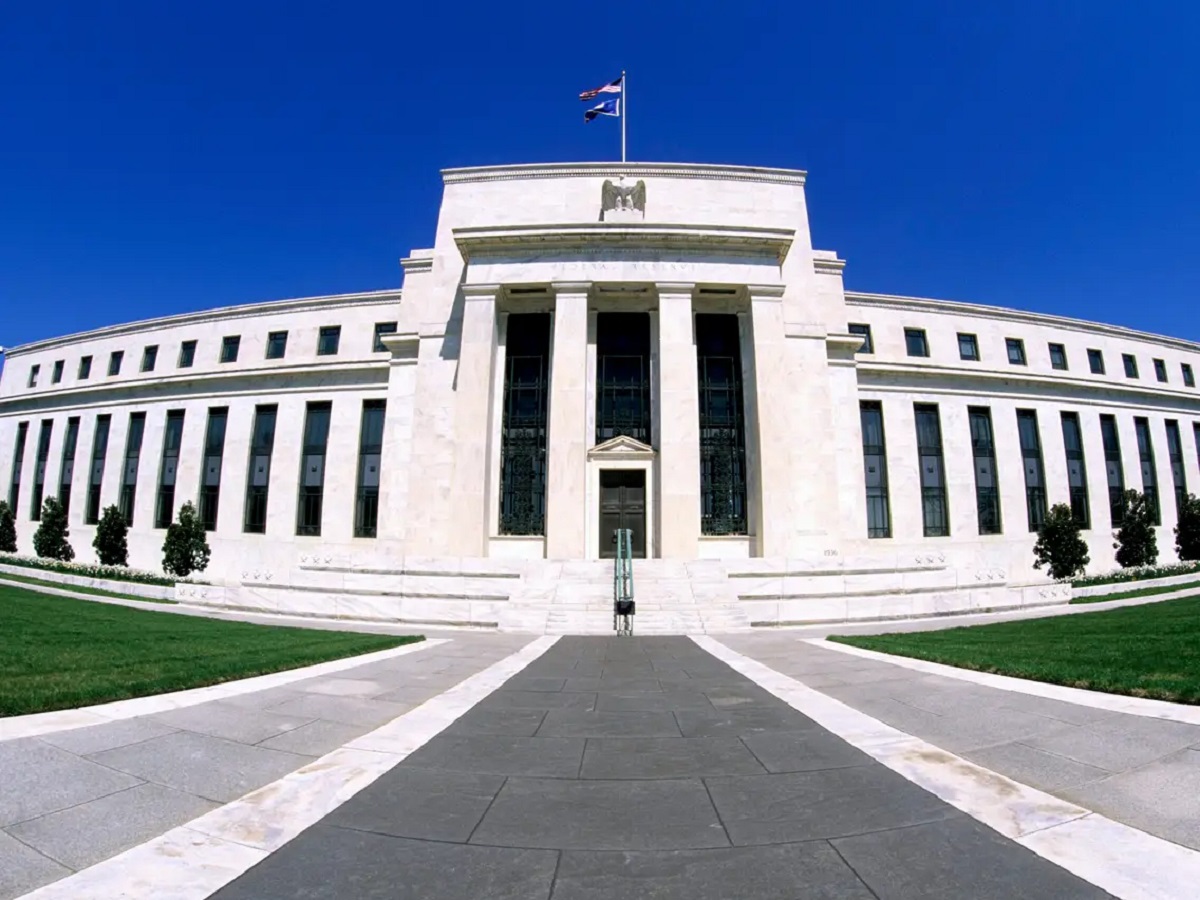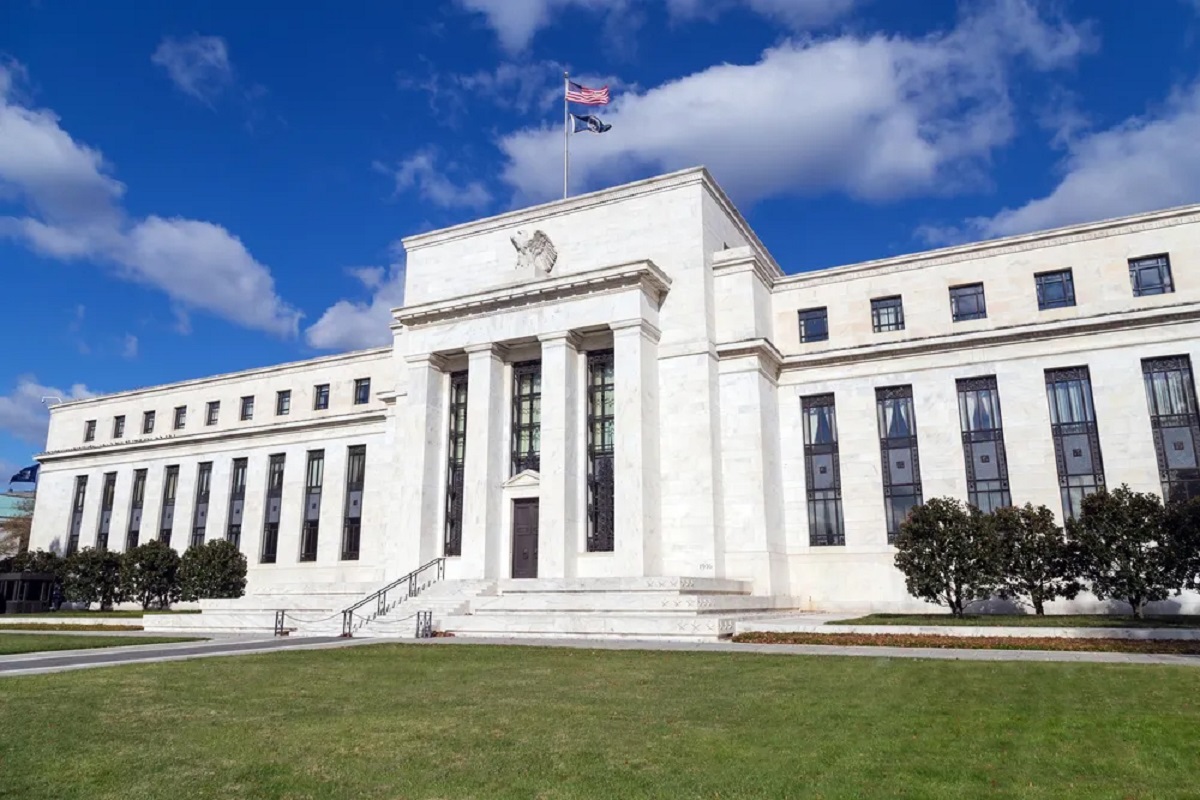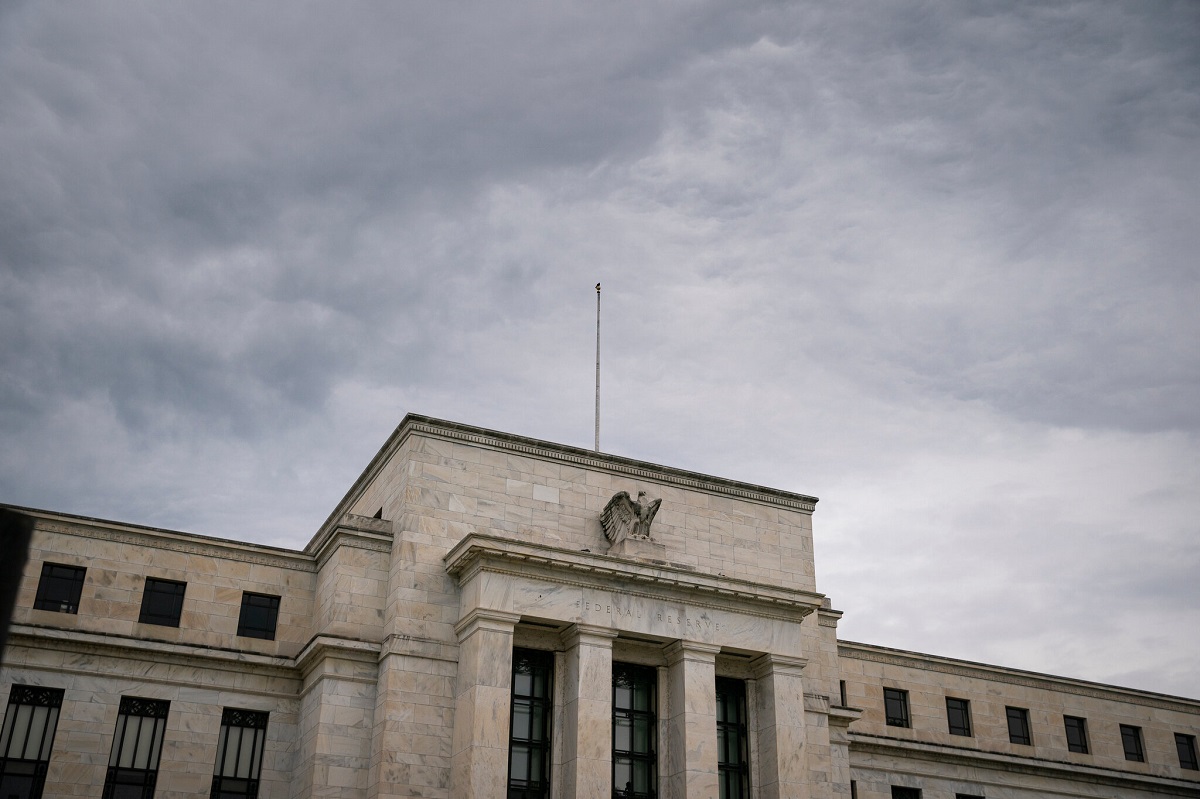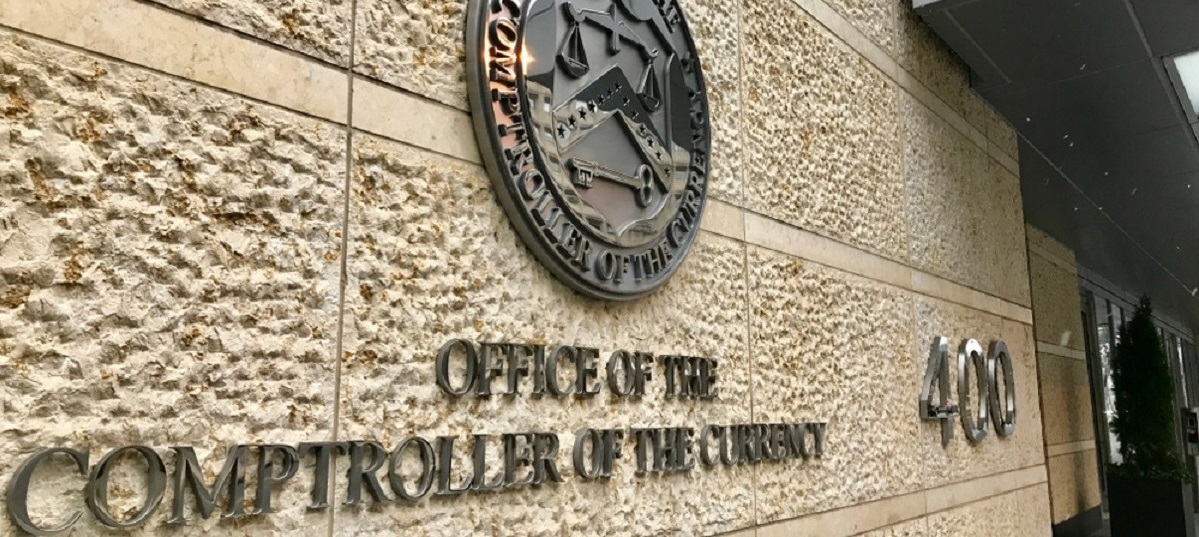Introduction
When it comes to understanding how money moves within the banking system, the role of the Federal Reserve cannot be overlooked. As the central bank of the United States, the Federal Reserve is responsible for maintaining the stability and integrity of the country’s financial system. One of its key functions is to control the money supply by influencing interest rates and regulating the flow of funds in the economy.
With its ability to inject money into the banking system, the Federal Reserve plays a crucial role in stimulating economic growth and managing financial crises. By manipulating the supply of money, the central bank can influence lending rates, investments, and overall economic activity. To achieve its goals, the Federal Reserve employs various tools and strategies, including open market operations, discount window operations, and reserve requirements. These mechanisms allow the Federal Reserve to increase the liquidity and stability of the banking system.
Understanding how the Federal Reserve puts money into the banking system is essential for grasping the broader principles of monetary policy. In this article, we will explore the methods utilized by the Federal Reserve to increase the money supply and its impact on the economy. From open market operations to reserve requirements, we will uncover the intricacies of these operations and how they shape the financial landscape of the nation.
What is the Federal Reserve?
The Federal Reserve, often referred to as the Fed, is the central banking system of the United States. Established in 1913 by the Federal Reserve Act, its main objective is to promote stability and ensure the smooth functioning of the country’s financial system. The Federal Reserve operates independently of the government and is composed of various components, including the Board of Governors, the Federal Open Market Committee (FOMC), and the 12 regional Federal Reserve Banks.
One of the primary responsibilities of the Federal Reserve is to conduct monetary policy, which involves managing the supply of money and credit in the economy. Through its monetary policy decisions, the Federal Reserve aims to achieve maximum employment, stable prices, and moderate long-term interest rates.
Additionally, the Federal Reserve regulates and supervises banks and other financial institutions to maintain the stability and integrity of the financial system. It also provides financial services to depository institutions, such as processing payments, distributing currency, and facilitating the efficient functioning of the payment system.
Another crucial role of the Federal Reserve is acting as the lender of last resort during times of financial crisis. As the nation’s central bank, it has the authority to provide emergency loans and liquidity injections to banks and other financial institutions to prevent widespread panic and instability.
The Federal Reserve operates through a combination of regulations, policies, and tools to achieve its objectives. These tools include open market operations, discount window lending, and reserve requirements.
In summary, the Federal Reserve is an integral part of the U.S. financial system, responsible for conducting monetary policy, regulating financial institutions, and acting as a lender of last resort. By understanding the role and functions of the Federal Reserve, individuals and businesses can gain insight into the factors that influence interest rates, inflation, and overall economic stability.
Monetary Policy and the Federal Reserve
Monetary policy refers to the actions taken by the central bank, in this case, the Federal Reserve, to manage the money supply and influence interest rates in order to achieve macroeconomic goals. The Federal Reserve plays a pivotal role in shaping the nation’s monetary policy, which is crucial for maintaining stability and promoting economic growth.
The primary objective of monetary policy is to achieve price stability while fostering maximum employment and moderate long-term interest rates. The Federal Reserve aims to keep inflation in check by closely monitoring and controlling the supply of money in the economy. When there is excessive money supply, it can lead to inflation, while a shortage of money can result in deflation. The Federal Reserve uses various tools to strike a delicate balance and maintain price stability.
Interest rates are another important aspect of monetary policy. By adjusting the target federal funds rate, which is the interest rate at which banks lend to each other overnight, the Federal Reserve can influence borrowing costs for households, businesses, and financial institutions. Lowering interest rates encourages borrowing and investment, stimulating economic activity, while raising interest rates can help control inflationary pressures.
The Federal Reserve also employs forward guidance as part of its monetary policy framework. Forward guidance refers to the central bank’s communication about its future policy intentions and the factors influencing its decisions. By providing clear and transparent guidance, the Federal Reserve seeks to shape expectations and influence market behavior.
Additionally, the Federal Reserve closely monitors economic indicators, such as GDP growth, employment data, inflation rates, and consumer spending, to assess the overall health of the economy and make informed decisions about monetary policy adjustments.
Overall, monetary policy is a powerful tool that the Federal Reserve utilizes to maintain stability, encourage economic growth, and manage inflation. By implementing appropriate measures, the Federal Reserve aims to create an environment conducive to sustainable economic expansion and financial well-being for individuals and businesses across the country.
How the Federal Reserve Puts Money in the Banking System
The Federal Reserve has various methods to put money into the banking system and increase the overall money supply. These methods include open market operations, discount window operations, and reserve requirements.
Open Market Operations: Open market operations involve the buying and selling of government securities, mainly Treasury bonds, by the Federal Reserve. When the Federal Reserve wants to increase the money supply, it purchases these securities from banks and financial institutions. In exchange, it credits the accounts of the institutions, effectively injecting more money into the banking system. Conversely, when the Federal Reserve wants to reduce the money supply, it sells these securities to the banks, thus withdrawing money from the system.
Discount Window Operations: The Federal Reserve also has a lending facility known as the discount window. Banks facing temporary liquidity shortages can borrow funds directly from the Federal Reserve at the discount rate, which is typically higher than the federal funds rate. By providing banks with this borrowing option, the Federal Reserve ensures that they have sufficient reserves to meet their obligations. When banks borrow from the discount window, it increases the money supply within the banking system.
Reserve Requirements: Reserve requirements are regulations that determine the minimum amount of reserves that banks must hold. Banks are required to keep a certain percentage of their deposits either as cash in their vaults or on reserve accounts held at the Federal Reserve. When the Federal Reserve lowers reserve requirements, banks have the capacity to lend more, thereby increasing the money supply within the banking system.
These methods of putting money into the banking system allow the Federal Reserve to influence the overall liquidity and stability of the financial system. By adjusting the money supply, the Federal Reserve can stimulate economic activity, encourage lending, and promote financial stability.
Open Market Operations
Open market operations are a key tool used by the Federal Reserve to influence the money supply in the banking system. Through these operations, the Federal Reserve buys and sells government securities, typically Treasury bonds, in the open market.
When the Federal Reserve wants to increase the money supply, it carries out open market purchases. It purchases government securities from banks and other financial institutions, paying for them with newly created money. The Federal Reserve deposits the funds directly into the banks’ reserve accounts, effectively injecting more money into the banking system.
Conversely, when the Federal Reserve wants to reduce the money supply, it conducts open market sales. It sells government securities to banks and financial institutions, taking money out of the banking system. The funds used to purchase the securities are effectively removed from circulation, reducing the overall money supply.
Open market operations are conducted through the Federal Open Market Committee (FOMC), which is responsible for making decisions related to monetary policy. The FOMC determines the target level of the federal funds rate, which is the interest rate at which depository institutions lend to each other overnight. The implementation of open market operations helps the Federal Reserve achieve the desired level of the federal funds rate.
These purchases and sales of government securities in the open market influence the interest rates in the economy. When the Federal Reserve buys government securities, it increases the demand for those securities, which in turn drives down their yields or interest rates. As a result, interest rates for other financial instruments, such as mortgages and corporate bonds, tend to decrease as well. This stimulates borrowing and investment, supporting economic growth.
Conversely, when the Federal Reserve sells government securities in the open market, it reduces the supply of those securities, pushing up their yields or interest rates. This increase in interest rates ripples through the economy, leading to higher borrowing costs for consumers and businesses. This tightening of credit can help control inflationary pressures and cool down an overheating economy.
Open market operations provide a flexible and effective way for the Federal Reserve to control the money supply and influence interest rates. By carefully adjusting its purchases and sales of government securities, the Federal Reserve can achieve its monetary policy objectives and maintain the stability of the banking system.
Discount Window Operations
Discount window operations are another important tool utilized by the Federal Reserve to put money into the banking system. The discount window serves as a lending facility through which banks can borrow funds directly from the Federal Reserve to meet their short-term liquidity needs.
When banks face temporary shortages of cash, they can turn to the discount window for a loan. By borrowing from the Federal Reserve, banks can access funds quickly to fulfill their reserve requirements and maintain their daily operations. The interest rate charged on these loans is known as the discount rate. The discount rate is typically higher than the federal funds rate, which encourages banks to seek alternative sources of funding first before resorting to borrowing from the discount window.
Discount window operations serve as a safety net for banks during periods of financial stress or when they are unable to borrow from other institutions. Access to the discount window helps prevent liquidity shortages from turning into solvency issues, thus promoting stability in the banking system.
The Federal Reserve sets certain criteria and conditions for banks to access the discount window. Banks need to meet specific requirements and demonstrate their eligibility to borrow from the facility. The Federal Reserve also closely monitors and supervises the borrowing activity to ensure that banks are using the facility appropriately and responsibly.
By providing this source of liquidity, the Federal Reserve contributes to maintaining the smooth functioning of the banking system. During times of economic downturns or financial crises, the discount window operations play a crucial role in ensuring the continued flow of funds to banks, preventing widespread disruptions in lending and financial activities.
It is important to note that the usage of the discount window by banks is generally viewed as a last resort, as there can be perceived stigma associated with it. Banks may prefer to borrow from other financial institutions or raise funds in the open market before resorting to borrowing from the discount window. However, the availability of the discount window provides confidence and reassurance to banks, contributing to the overall stability of the banking system.
Discount window operations offer an essential mechanism for the Federal Reserve to inject liquidity into the banking system when needed. By providing a reliable source of funding during times of stress, the discount window helps ensure the functioning and stability of the financial system.
Reserve Requirements
Reserve requirements are regulations set by the Federal Reserve that mandate the minimum amount of reserves that banks must hold. These reserves include both cash held in bank vaults and deposits held at the Federal Reserve. Reserve requirements serve as a crucial tool for the Federal Reserve to control the money supply and influence lending activities in the banking system.
When the Federal Reserve lowers reserve requirements, it effectively increases the amount of funds that banks are allowed to lend. This stimulates lending activity and boosts the overall money supply within the banking system. By reducing reserve requirements, the Federal Reserve aims to encourage economic growth and facilitate easier access to credit for businesses and individuals.
Conversely, when the Federal Reserve raises reserve requirements, it restricts the amount of money available for lending by banks. This tightening of reserves reduces the money supply and acts as a brake on lending and economic activity. By increasing reserve requirements, the Federal Reserve aims to curb excessive lending and prevent the economy from overheating, which could lead to inflationary pressures.
Reserve requirements vary based on certain factors, such as the size and type of deposits held by banks. Smaller banks may have different requirements compared to larger banks. Additionally, the Federal Reserve periodically reviews and adjusts reserve requirements to align with changing economic conditions and policy objectives.
Reserve requirements ensure that banks have enough readily available funds to satisfy withdrawal requests from depositors. They act as a safeguard against bank runs, providing a level of confidence and stability in the banking system. Additionally, reserve requirements help the Federal Reserve monitor and control the overall liquidity of the banking system.
It is important to note that the Federal Reserve has the ability to adjust reserve requirements as a monetary policy tool, but it does not frequently make significant changes to these requirements. Instead, the Federal Reserve primarily relies on other tools, such as open market operations and the discount window, to influence the money supply and manage the banking system’s liquidity.
Reserve requirements, along with other tools and mechanisms employed by the Federal Reserve, contribute to the implementation of effective monetary policy. By adjusting these requirements, the Federal Reserve can influence lending activities, regulate the money supply, and maintain a stable and well-functioning banking system.
The Impact of Increased Money Supply
An increase in the money supply, facilitated by the actions of the Federal Reserve, can have several effects on the economy. Let’s explore the impact of an increased money supply:
1. Increased Spending: When there is a larger supply of money in the economy, individuals and businesses have more funds available for spending and investment. This can stimulate economic activity, as increased spending leads to higher demand for goods and services.
2. Investment and Economic Growth: With more money available, businesses have greater access to capital for expansion and investment. This can lead to increased productivity, job creation, and overall economic growth.
3. Lower Interest Rates: An increased money supply can lead to lower interest rates. As there is more money available to lend, the competition among borrowers can drive down interest rates. This makes it more affordable for individuals and businesses to borrow money, encouraging investment and consumption.
4. Inflationary Pressure: An excessive increase in the money supply can lead to inflationary pressure. If the growth in the money supply outpaces the growth in goods and services in the economy, prices may rise. This can erode the purchasing power of individuals and lead to higher costs for businesses.
5. Asset Price Inflation: An increased money supply can also lead to inflation in asset prices, such as real estate and stocks. When there is ample liquidity in the market, individuals and institutions may invest in these assets, driving up their prices.
6. Exchange Rate Effects: An increased money supply can impact exchange rates. If a country’s money supply expands faster than that of other countries, its currency may depreciate relative to other currencies. This can affect imports, exports, and international trade.
7. Income Redistribution: A larger money supply can also result in income redistribution. As prices rise, individuals with fixed incomes may find it challenging to maintain their purchasing power. On the other hand, those with assets that appreciate in value, such as real estate or stocks, may see their wealth increase.
It is crucial for the Federal Reserve to carefully manage the money supply to maintain price stability and promote sustainable economic growth. By monitoring and adjusting monetary policy, the Federal Reserve seeks to strike a balance between stimulating economic activity and managing inflationary pressures.
The Impact on Interest Rates
The actions of the Federal Reserve and changes in the money supply can have a significant impact on interest rates in the economy. Let’s explore the effects of an increased money supply on interest rates:
1. Lower Borrowing Costs: An increased money supply can lead to lower interest rates. When there is an abundance of money available for lending, competition among borrowers increases, driving down interest rates. This makes it more affordable for individuals and businesses to borrow money for various purposes, such as purchasing homes, funding investments, or expanding their businesses.
2. Stimulating Investment and Consumption: Lower interest rates encourage borrowing and investment. When borrowing costs are reduced, businesses are more likely to undertake new projects or expand existing ones. This increased investment can lead to job creation and overall economic growth. Additionally, lower interest rates can also incentivize consumers to borrow for major purchases like homes or cars, stimulating consumption.
3. Impact on Savers: While lower interest rates can benefit borrowers, they can have a negative impact on savers. With lower interest rates, the returns on savings accounts, certificates of deposit, and other fixed-income instruments may decrease. This can affect individuals who rely on interest income from their savings, as they may see a reduction in their earnings.
4. Asset Prices: Lower interest rates can also impact asset prices, such as real estate and stocks. When borrowing costs are low, investors may seek higher returns through investments in these assets, driving up their prices. This can create a wealth effect, boosting consumer confidence and spending, as individuals perceive their assets to have increased in value.
5. Inflation and Monetary Policy: An increased money supply, which can potentially result from the actions of the Federal Reserve, can lead to inflationary pressures. If the money supply grows faster than the growth of goods and services in the economy, prices may rise. To control inflation, the Federal Reserve may respond by raising interest rates. Higher interest rates can slow down borrowing and spending, acting as a tool to mitigate inflationary pressures.
6. Mortgage Rates: Lower interest rates can have a direct impact on mortgage rates. Mortgage interest rates are influenced by a variety of factors and often track the movement of long-term government bond yields. When the money supply increases and interest rates decrease, mortgage rates tend to follow suit. This can make homeownership more affordable, potentially stimulating the housing market.
It is important to note that interest rates are influenced by a combination of factors, including the supply and demand for credit, market conditions, investor sentiment, and the actions of the Federal Reserve. The Federal Reserve carefully considers these factors and utilizes monetary policy tools to manage interest rates in a manner that supports economic growth while maintaining price stability.
Conclusion
The Federal Reserve plays a crucial role in managing the money supply and ensuring the stability of the banking system. Through various methods such as open market operations, discount window operations, and reserve requirements, the Federal Reserve has the ability to put money into the banking system and influence interest rates.
Open market operations involve the buying and selling of government securities in the open market, which allows the Federal Reserve to inject or withdraw money from the banking system. Discount window operations provide a lending facility that allows banks to borrow directly from the Federal Reserve during periods of liquidity shortage. Reserve requirements set by the Federal Reserve mandate the minimum amount of reserves banks must hold, influencing the overall money supply.
The impact of an increased money supply and the actions of the Federal Reserve on interest rates can have far-reaching effects. Lower interest rates stimulate borrowing, investment, and consumption, promoting economic growth. However, they can also impact savers and contribute to inflationary pressures. The Federal Reserve carefully manages and adjusts its monetary policy to strike a balance that fosters economic growth while maintaining price stability.
Understanding how the Federal Reserve puts money into the banking system and the impact it has on the economy and interest rates is crucial for individuals, businesses, and policymakers. By closely monitoring and managing the money supply, the Federal Reserve plays a vital role in maintaining financial stability, promoting economic growth, and ensuring the overall well-being of the economy.

























